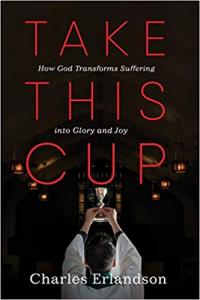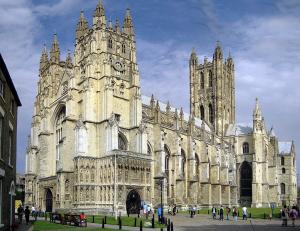 I’m often asked the question, “What is Anglicanism?” To which I respond: “Do you want the 1 long sentence answer, the 1 paragraph answer, the 1 page answer, or my Ph.D. thesis? Later in this post, I’m going to give you the 2 word definition of Anglicanism.
I’m often asked the question, “What is Anglicanism?” To which I respond: “Do you want the 1 long sentence answer, the 1 paragraph answer, the 1 page answer, or my Ph.D. thesis? Later in this post, I’m going to give you the 2 word definition of Anglicanism.
Avoiding having to answer the question of what Anglicanism is has been a favorite Anglican hobby for decades, and when we do get answers to this question, they are often vague or partial. I was at a notable meeting of Anglican clergy and educated laity, at which, in one of the breakout sessions, the dreaded question was asked. What ensued was an illustration of the famous story of the elephant and blind men. Some told of their personal preference for liturgy, liturgy, or organ music. Others gave good but partial answers. But there was clearly a sense of fumbling and tumbling over dumb numb tongues.
That same year, I took an intensive course on Anglicanism. After 2½ days of lecture on Anglicanism, there was a brief time for Q & A at the end. The students made the mistake of momentarily hesitating, thus allowing me to rush into the silence with my raised hand. You guessed it, I asked the dreaded question: “What is Anglicanism?”
You could hear a pin drop: “Oh no he didn’t!” I could tell some people were thinking. The professor who taught the course hesitated for a few seconds with that deer in the headlight look and then did what any good teacher would do in such a situation: he threw the question back at the class. “What do you think Anglicanism is?” The students labored valiantly to answer but the effects were similar to the other situation I described above.
Even Archbishop Rowan Williams, in his book Anglican Identities (notice the plural), ducked out of answering what Anglicanism is. In that book, he forswears “any aim to provide a fresh rallying-point for Anglican identity in these pages.” Williams’s title itself even seems to concede that defining a single Anglican identity may be an impossibility.
I’m sure you’ve heard the saying: “Fools rush in where angels fear to tread.” Have any of you been the fool who rushes in? I can’t say that I exactly rushed in to define Anglicanism because it was more like being dragged kicking and screaming. But after trying unsuccessfully for 3 years to make my Ph.D. thesis about John Keble’s The Christian Year I was obliged to pursue a thesis concerning the identity of Anglicanism. Four years or more spent trying to define Anglicanism has given me a lot of time to come up with a good answer to the question: “What is Anglicanism?”
I promised that today I’d give you the one phrase definition of Anglicanism. Actually, I can do even better than that. I can define Anglicanism not in 10 words or 5 words or even 3 words. I can define Anglicanism in 2 words: “Reformed Catholicism.”
Anglicanism is, in its essence, Reformed Catholicism. There are, of course, two parts to this definition: “Reformed” and “Catholicism” or “Catholic.” In calling Anglicanism “Reformed Catholicism” the two words stand in a distinct relation to each other. “Reformed” is the adjective which modifies the noun “Catholicism.” This is an important point to grasp, and I’ll be coming back to it in some of my later posts.
The fact that the “Catholic” part of Anglicanism is the noun means that it is the thing that is being reformed. In this sense, although Anglicanism is also Protestant, it is essentially a Catholic Christian tradition. And yet it’s not only Catholic because in the Western Church it became necessary to reform some of the abuses and errors of the medieval Roman Catholic Church.
Anglicanism has characteristics of catholicity which bear a certain similarity and relationship to the catholicity of the Roman Catholic Church and the Eastern Orthodox Churches. But it also has characteristics of being Reformed which bear a certain similarity and relationship to the churches that proceeded from the Continental Reformation, such as Calvin’s Geneva or Luther’s Germany.
Anglicanism is sometimes called the via media, or middle way. In its simplest sense, Anglicanism is seen as the via media between Protestantism (especially certain advanced forms of it) and Roman Catholicism. Just which of these two Anglicanism is actually closer to is a complex subject I can’t adequately address here. But it is true that in some ways Anglicanism looks more like Protestant churches and in some ways it looks more like Roman Catholicism.
The reasons for and consequences of this will have to be addressed in later posts.
In my next post I’ll discuss just what Anglicans mean when they say that they’re “Catholic.”
CC Image courtesy of Librarian by asplosh on Flickr.jpg
9WFFGHPUAYXS









